Prostate Cancer is the Most Commonly Diagnosed Cancer in Men in Australia and New Zealand.i,v
What Is the Prostate?
The prostate is a small, walnut-shaped gland that forms part of the male reproductive system. It is located just below the bladder and in front of the rectum. The primary role of the prostate is to produce seminal fluid, which nourishes and transports sperm during ejaculation. The urethra, which carries urine and semen out of the body, passes through the centre of the prostate. As men age, the prostate can enlarge, which may lead to urinary symptoms even when cancer is not present.ii
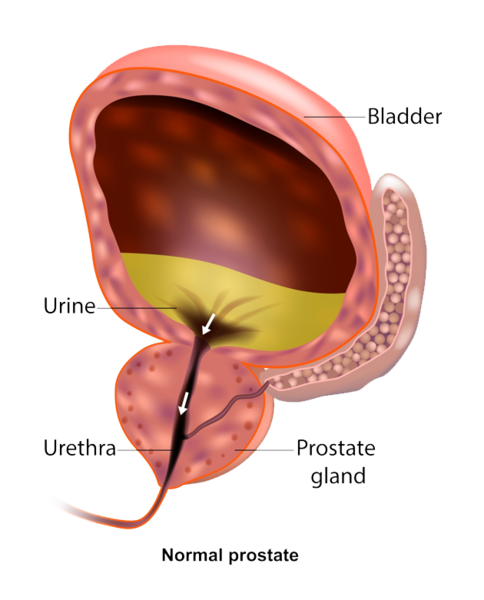
Understanding Prostate Cancer
Prostate cancer begins when cells in the prostate gland begin to grow in an abnormal and uncontrolled way. In many cases, this cancer develops slowly and may not cause any noticeable symptoms for years. However, in some cases, it can grow more quickly and spread beyond the prostate to nearby or other parts of the body.iii
Most prostate cancers are slow growing. Therefore, early diagnosis is crucial and often provides a broader range of treatment options than if the cancer is detected at a later stage. In fact, most men diagnosed with prostate cancer live for many years after diagnosis, often without symptoms or the need for immediate treatment. In appropriately selected patients, the disease can be monitored through regular review, and treatment may never be necessary.iv Outcomes depend on the nature of the cancer, how early it is found, and how it responds to monitoring or treatment. Gaining a clear understanding of the type, stage, and grade of prostate cancer with the support of a healthcare provider can help inform treatment decisions and assist patients in making choices appropriate to their individual circumstances.
Common Symptoms
In its early stages, prostate cancer often causes no symptoms. As the disease advances, symptoms may include:iii

Difficulty urinating or weak urine stream

Blood in urine or semen

Increased frequency of urination, especially at night

Erectile dysfunction

Burning sensation when urinating

Discomfort in the pelvic area or lower back
It is important to note that none of these symptoms alone suggest prostate cancer, but they are signs to discuss with your healthcare professional and consider a prostate check-up.iii

Risk Factors
-
Age:
Risk increases after age 50. Over 85 % of Australian men diagnosed with prostate cancer are over the age of 60.iii
-
Family history:
A first-degree relative with prostate cancer may increases risk. Around 15% of Australian cases occur in men with a family history of the disease, and having two or more close relatives diagnosed can raise lifetime risk by up to five times.iii
-
Ethnicity:
Men of African or Caribbean descent may be at higher risk. International research shows that these men have higher incidence rates and earlier onset compared to other groups.vi
-
Genetic factors:
Mutations in genes like BRCA1/2 and HOXB13 can elevate risk. Men with BRCA1 or BRCA2 mutations tend to develop prostate cancer at a younger age, and their cancers are often faster growing and more aggressive.iii
-
Lifestyle:
Obesity, high-fat diet, and limited exercise may contribute to increased risk. Although lifestyle factors are not proven cause, emerging evidence suggests that maintaining a healthy weight and regular physical activity can reduce the risk of prostate cancer.vii
Staging of Prostate Canceriii
Refers to how far the cancer has progressed, from being confined to the prostate (early stage) to having spread to other areas (advanced stage).
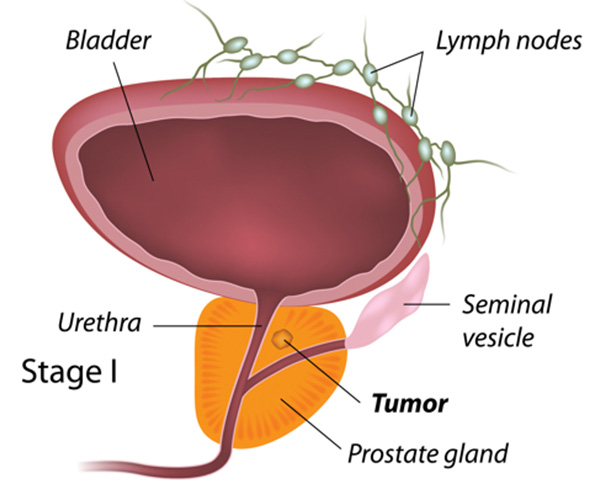
Stage I:
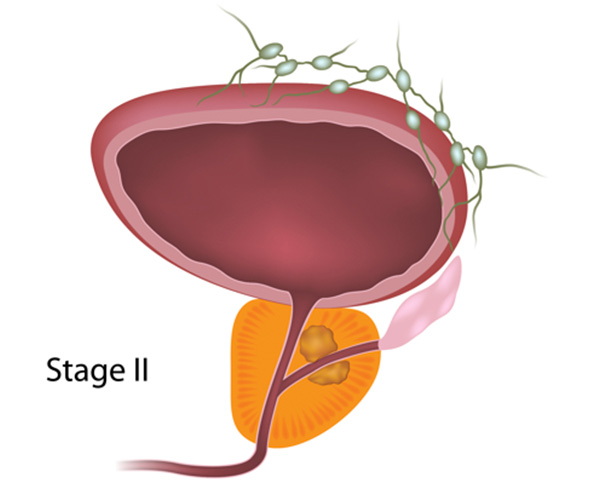
Stage II:
The cancer can usually be felt during rectal examination but has not spread outside of the prostate.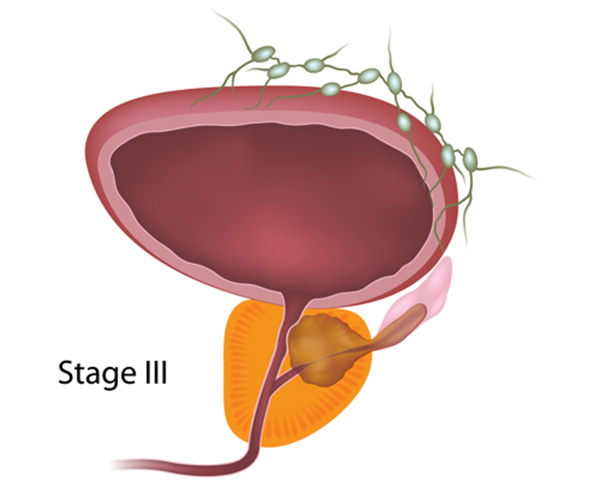
Stage III:
The cancer has begun to spread beyond the prostate to nearby tissues, such as the seminal vesicles.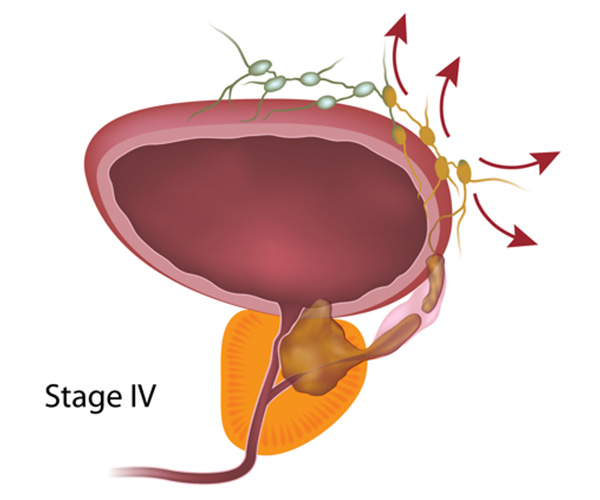
Stage IV:
The cancer has spread to distant parts of the body, such as lymph nodes, bones, or other organs.Why Early Detection Matters
Detecting prostate cancer in its early stage may support improved long-term outcomes and help preserve quality of life, particularly aspects related to urinary and sexual function. Identifying the condition before it progresses allows clinicians and patients to consider a broader range of options tailored to the individual’s needs and circumstances.
When diagnosed early and still confined to the prostate, prostate cancer is associated with a five-year survival rates, reported to be over 98%. In contrast, survival rates decline when the cancer is found at a later stage, dropping to approximately 36% once it has spread to distant parts of the body.iii


Understanding your personal risk factors, staying alert to potential symptoms, and discussing your prostate health and testing with your general practitioner or specialist are all proactive steps that support earlier diagnosis and inform timely treatment decisions.
Your doctor may recommend medical investigations such as blood tests, imaging, or a biopsy to help determine the type and stage of prostate cancer.
Prostate Cancer Support Services:
- Prostate Cancer Foundation of Australia (PCFA) - National support organisation with education, resources, and nurse helpline
- Prostate Cancer Foundation Specialist Nurses - Dedicated nurses supporting patients at each stage
- Community Support – Find your nearest group.
Groups available for:
- Advanced cancer
- Younger men
- Carers and partners
- LGBTIQA+ individuals
- CALD communities
Treatment Centres
I Cancer Australia (https://www.canceraustralia.gov.au/cancer-types/prostate-cancer/prostate-cancer-australia-statistics#new-cases), July 2025
ii NCBI, How does the prostate work?, (https://www.ncbi.nlm.nih.gov/books/NBK279291/), July 2025
iii Prostate Cancer Foundation of Australia (https://www.prostate.org.au/risk-and-symptoms/risk-factors/), July 2025
iv JAMA, Vol. 331, No. 24 (https://jamanetwork.com/journals/jama/fullarticle/2819352?), July 2025
v Prostate Cancer Foundation NZ (https://prostate.org.nz/prostate-cancer), August 2025
vi American Cancer Society, 2024 Prostate Cancer Facts & Figures, August 2025
vii Prostate Cancer Foundation of Australia (https://www.pcfa.org.au/news-media/news/health-and-fitness-during-prostate-cancer/), August 2025

